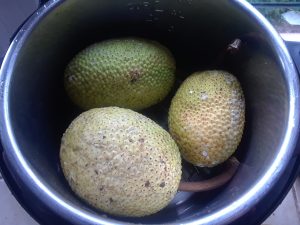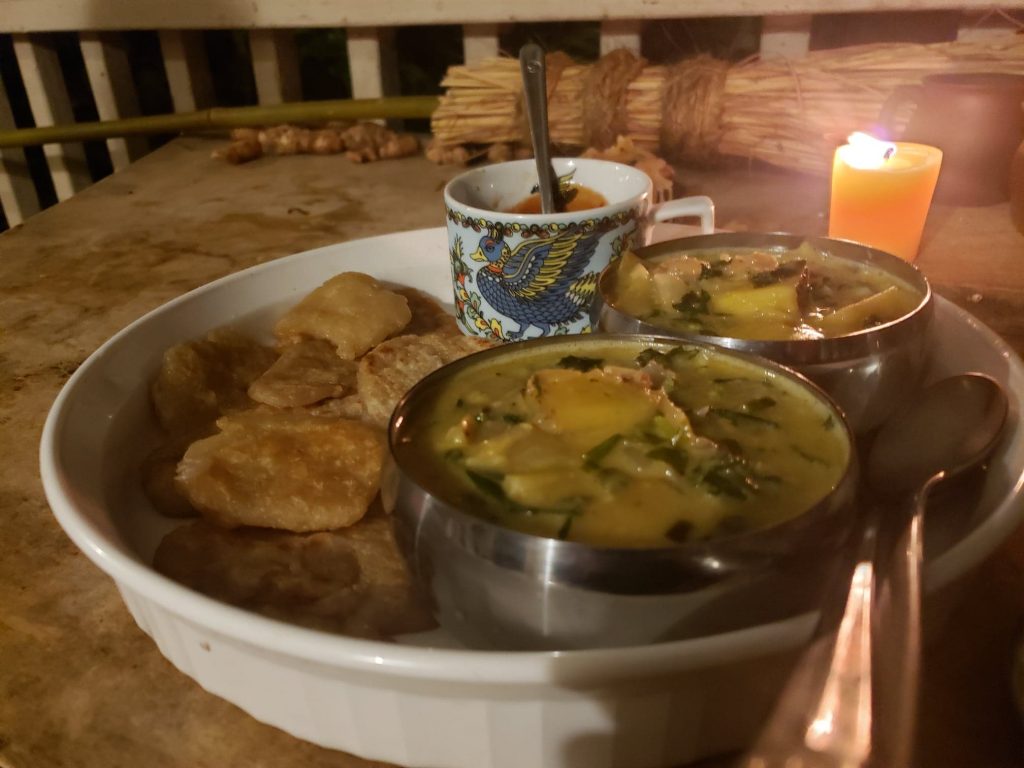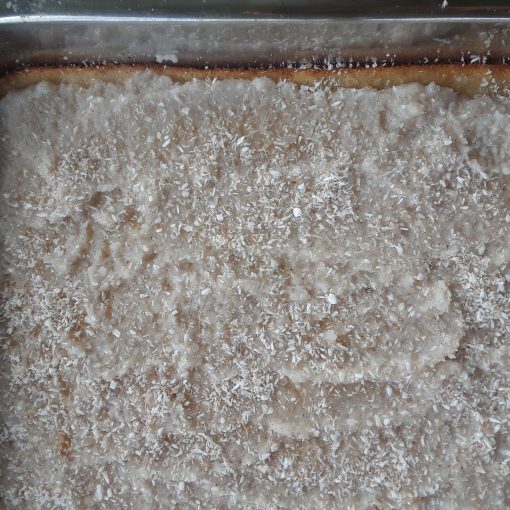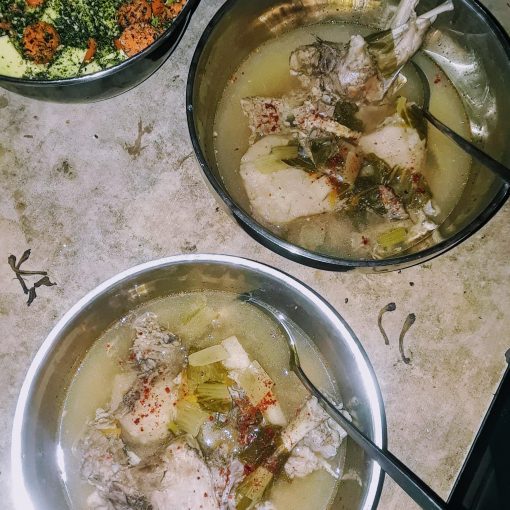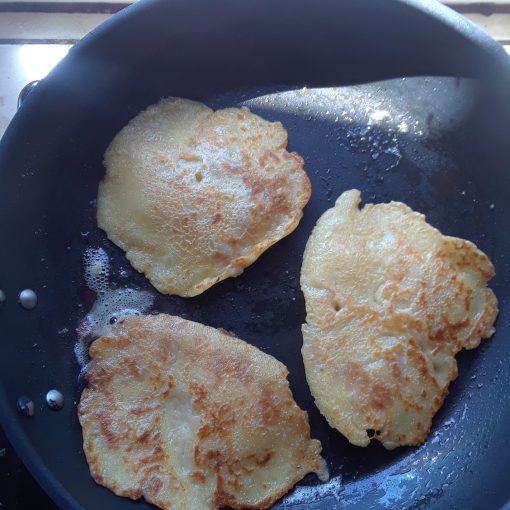Heavenly Breadfruit
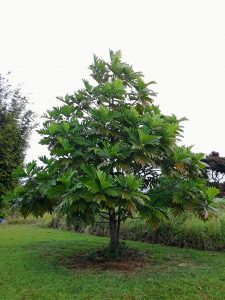
I am an enthusiastic cook. I am not even quite sure what propels me so strongly to create in the kitchen as I do, but whatever “it” is, it is indeed unstoppable… I often scratch my head in wonder when I become aware that I’m back in my small-ass-corner-of-the-house-kitchen putting together some food-medicine concoction for the fourth or fifth time that day. My passion to make art with God’s gift of food is probably my most fundamental instinct 🙂
Harvesting food from the garden is my second favorite thing. Watching the miraculous manifestations of heaven and earth’s love-making pop up from the ground or out of a tree, sprout a new leaf or bud always brings me to joy.
This last week on the farm our garden seemed to give birth to its finest all at once. Our front kalo (taro) patch came ripe, two delicious racks of rare bananas, and most significantly, our breadfruit trees dropped fruit. (They are still very young you see.) It’s a big deal for them and for me. Each time a fruit tree gives birth to a fully formed mature fruit it’s like a baby delivered into the world without complications. In essence, it’s a miracle.
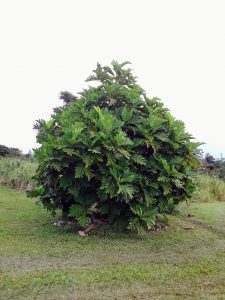
These two breadfruit trees I love so much I even named them: the beauty to the north is Hina Momona, and her sister, to the south, Hina Hopoe.
The other day, hot and sweaty, I emerged from deep in the valley where I had been felling trees to find three medium sized breadfruits on the ground at the entrance to our garden home. I looked up and around in amazement and saw our neighbor, Barb, on her front porch looking at me. I knew at once that she had put the ulus there for me, to find and to have. I was overjoyed. (While gone from the island for holidays, all the ulu’s fruits I had sprayed religiously for the past 6 months had come ripe, dropped, and had either been eaten by Barb or left to decay in the yard by Drake. But the last three were for me! Gorgeous. And to top it off, all three were perfectly ripe and ready to be cooked that day.
This, I did. For 30 minutes in the pressure cooker.
When they came cool enough to eat they were indeed (in that moment, especially) the best ulus I have ever tasted. I have been waiting patiently for fruit from these trees ever since I first moved onto the farm two years ago…so you can imagine the significance of this moment for me!
What else did I do with it besides eat it warm and plain?
Later that evening this simple ulu curry soup emerged out of the infinite. It is partially inspired by my interest in Sikh yogi cooking. Which herbs do yogis combine for wellness? Onions, ginger and garlic. The magic trinity of health. So, here it is:
Breadfruit Curry Recipe:
- Two medium onions
- 1 ½ cup of presteamed ulu (breadfruit)
- 1 bunch of kale
- 1 thumb of ginger
- 1 thumb of olena (turmeric)
- 5 garlic cloves
- 1 Tbsp curry powder
- 1/4 tsp black pepper
- 4 Tbsp ghee (butter or coconut oil can substituted)
- 1 can coconut milk (if you get this some other way than in a can, you win!)
- 1 Tbsp miso
- SALT! (add, stir, taste, adjust)
Steps:
- Caramelize onions on medium heat with oil. Add curry powder 3-5 minutes in. Then grated ginger, turmeric, garlic, and black pepper. Allow spices to blend 5-10 mins.
- Cut steamed ulu into bite size pieces. Move contents of pan to the outer edge making room for ulu to brown in the center (the hottest part of the pan). Allow to brown for several minutes, then, with a pair of tongs or two forks, flip each piece over to brown on the opposite side.
- Chop kale into thin or small pieces. (I like to use the whole thing–stems and all–so I chop it very fine, as the stock can be somewhat fibrous. When you grow your own food every part is precious!) Now, we are going to blanch the kale before we add it to our pan of sauteed veggies. Kale contains a chemical crystal that can be difficult to digest unless it is well broken down. Blanching is the most effective way to do this. How to Blanch: Step 1. Boil water. Step 2. Submerge kale in hot water and cover the bowl or pot with a lid. Let sit for 5-6 minutes… After this time you can drain off liquid and throw the kale into the pan of sauteing veg.
- Add coconut milk, miso and salt. Allow more time for veggies to cook, spices to blend, and magic to happen.
- Eat, chew well, and savor every bite.
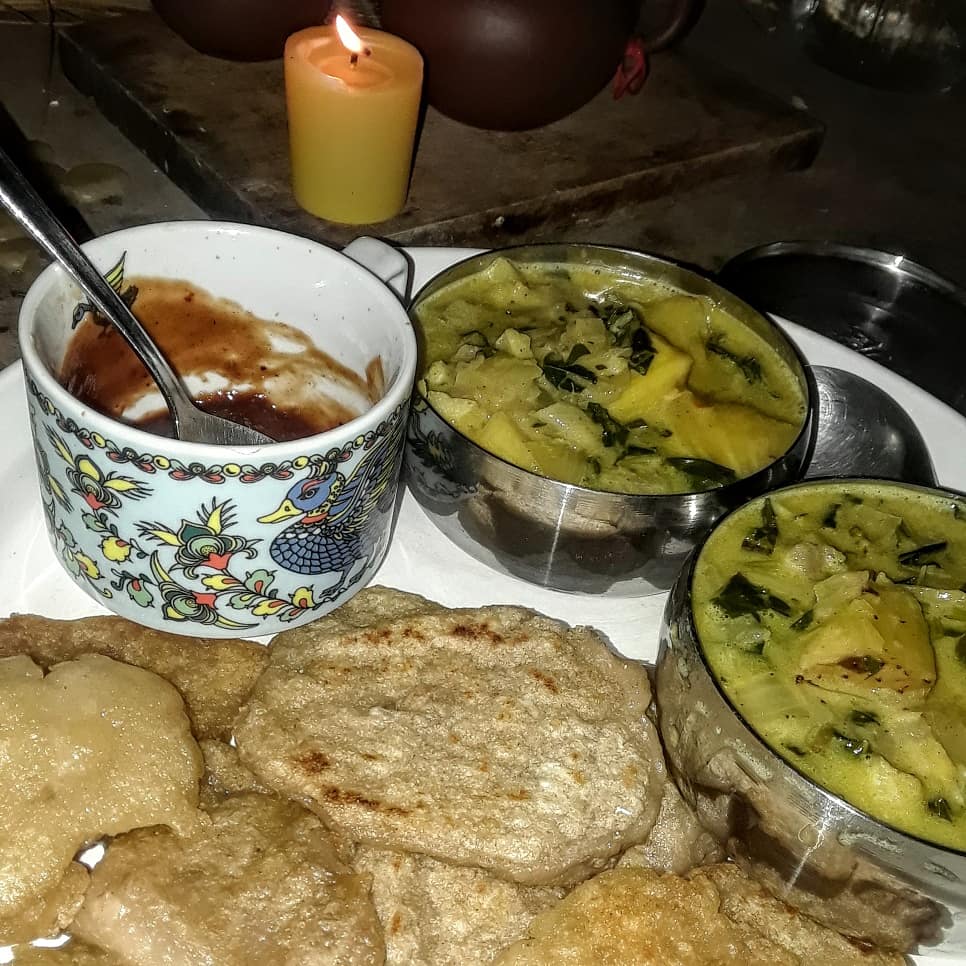
I suppose this dish might go well with rice or quinoa, but for me, it seemed pretty complete with just ulu as its lead star. The second night we ate our soup with fried pa’i’ai (pounded kalo) with Drake’s dank katsu sauce. YUM.
A Note on ulus:
You can cook a breadfruit when it’s hard, before it comes ripe and soft, and it’s okay. Or you can wait till is mushy and sweet, that’s okay too. But if you wait till it’s right in between those two stages, just beginning to soften up, and steam it, it comes sweet AND starchy (like sweet BREAD!) and perfectly firm when cooked, in other words, ‘ono.
Final Notes.
A lot of what I make is based on what is around. (Thank God for the bounty.) If you don’t have all the ingredients on the list there’s no need to go out of your way to get them all; or you can, if you like; but in my life, I find that the best culinary experiences come from using what is available and on hand in the kitchen or present in the garden at the time. If kale is not present, maybe you have beet greens, or chard. I haven’t had any success with either of those crops yet, but the kale did just fine. So I used kale. If you’re growing potatoes, yams, or squash, substitute that for the ulu. You may even use the same ingredients as me, but guarantee it’ll taste different. How is that possible? Your kitchen is full and alive, cultured with your family’s microbiome, and mine with ours. Your garden has its own flavor of soil biology. This is but one of the beauties of home-growing/home-cooking. Cheers to that 🙂
